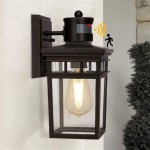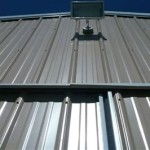What Is The Best Paint To Use On Outdoor Cement?
Selecting the optimal paint for outdoor cement surfaces involves considering several factors, including the specific type of cement, the intended use of the surface, the prevailing climate, and the desired aesthetic. Cement, a porous and alkaline material, presents unique challenges compared to other substrates. Choosing the wrong paint can lead to peeling, cracking, blistering, or discoloration, resulting in costly repairs and a compromised appearance. This article outlines the key considerations and paint types that perform best on exterior cement surfaces.
Understanding Cement Surface Properties
Before selecting a paint, an understanding of the cement's characteristics is paramount. Cement is inherently porous. This porosity allows water to penetrate, which, during freeze-thaw cycles in colder climates, can expand and contract, causing the paint to separate from the surface. Moreover, cement is alkaline, possessing a high pH. Some paints react negatively with alkaline environments, leading to saponification, a process where the paint's binding agents break down, resulting in a sticky or soapy residue and ultimately, paint failure. New cement surfaces must be cured for at least 30 days before painting, allowing the alkaline levels to decrease through natural carbonation. Failure to do so can significantly impact paint adhesion and longevity.
Furthermore, the surface profile of the cement plays a crucial role. Smooth surfaces may not provide adequate adhesion for certain paints, necessitating surface preparation techniques like etching or profiling. Conversely, heavily textured surfaces may require more paint to achieve uniform coverage. Identifying existing coatings, if any, on the cement is essential. Certain paints are incompatible with others, and applying an incompatible paint can lead to inter-coat adhesion issues.
Key Paint Types for Outdoor Cement
Several paint types are suitable for outdoor cement, each offering distinct advantages and disadvantages. The ideal choice depends on the specific application and environmental conditions.
Acrylic Latex Paints: Acrylic latex paints are a popular and versatile option for exterior cement surfaces. They offer excellent adhesion, durability, and resistance to cracking and peeling. These paints are breathable, allowing moisture vapor to escape from the cement, preventing blistering. Acrylic latex paints are also UV-resistant, maintaining their color and finish for extended periods. They are relatively easy to apply and clean up with soap and water. However, acrylic latex paints may not perform as well in high-traffic areas or areas subject to heavy abrasion.
When selecting an acrylic latex paint, look for formulations specifically designed for masonry or concrete surfaces. These paints typically contain additives that enhance their adhesion, water resistance, and alkali resistance. Consider using a primer designed for masonry surfaces before applying the topcoat. A primer helps to seal the cement, providing a uniform surface for the paint and further improving adhesion.
Elastomeric Paints: Elastomeric paints are high-build coatings formulated to expand and contract with the cement substrate. These paints are exceptionally durable and resistant to cracking, peeling, and water damage. They are particularly well-suited for surfaces that are prone to movement or cracking, such as foundations or retaining walls. Elastomeric paints are also highly waterproof, providing excellent protection against moisture intrusion. However, elastomeric paints are typically more expensive than acrylic latex paints and may require specialized application techniques.
Elastomeric paints are thicker than conventional paints and may require multiple coats to achieve adequate coverage. They are also relatively difficult to apply, often requiring the use of specialized spray equipment. Before applying elastomeric paint, it is essential to thoroughly clean and prepare the cement surface. Any existing cracks or imperfections should be repaired before painting. It is also crucial to apply the paint in accordance with the manufacturer's instructions to ensure proper performance.
Epoxy Paints: Epoxy paints are two-part systems consisting of a resin and a hardener. When mixed together, these components chemically react to form a hard, durable, and chemical-resistant coating. Epoxy paints are exceptionally strong and resistant to abrasion, making them ideal for high-traffic areas such as garage floors, patios, and walkways. They also offer excellent resistance to chemicals, oils, and solvents. However, epoxy paints are not as breathable as acrylic latex or elastomeric paints and may not be suitable for surfaces that are prone to moisture intrusion. They also tend to yellow over time when exposed to sunlight.
Epoxy paints require careful preparation and application. The cement surface must be thoroughly cleaned and etched to ensure proper adhesion. The resin and hardener must be mixed precisely according to the manufacturer's instructions. Epoxy paints also have a limited pot life, meaning that they must be applied within a certain timeframe after mixing. Applying epoxy paint requires experience and skill, and it is often best left to professional painters.
Surface Preparation and Application Techniques
Regardless of the paint type selected, proper surface preparation is crucial for ensuring optimal adhesion and longevity. The cement surface must be clean, dry, and free of any loose or flaking material. Any existing coatings should be removed, and any cracks or imperfections should be repaired.
Cleaning: Remove dirt, grease, oil, and other contaminants from the cement surface. This can be accomplished using a pressure washer or by scrubbing the surface with a detergent solution. For stubborn stains, consider using a specialized cleaner designed for concrete surfaces. Rinse the surface thoroughly with clean water to remove any residual cleaning agents. Allow the surface to dry completely before proceeding to the next step.
Repairing: Repair any cracks, holes, or other imperfections in the cement surface. Use a concrete patching compound to fill in these areas. Follow the manufacturer's instructions for mixing and applying the patching compound. Allow the compound to dry completely before sanding it smooth. Ensure the patched areas are flush with the surrounding cement surface.
Etching: Etching the cement surface creates a slightly rough profile, improving paint adhesion. This can be accomplished using a muriatic acid solution or by using a mechanical grinder. When using muriatic acid, follow the manufacturer's instructions carefully and wear appropriate safety gear, including gloves, eye protection, and a respirator. Apply the acid solution to the cement surface and allow it to sit for the recommended amount of time. Rinse the surface thoroughly with clean water to neutralize the acid. When using a mechanical grinder, use a diamond grinding wheel to create a uniform surface profile. Vacuum the surface thoroughly to remove any dust or debris.
Priming: Apply a primer specifically designed for masonry or concrete surfaces. Primers help to seal the cement, providing a uniform surface for the paint and further improving adhesion. Follow the manufacturer's instructions for applying the primer. Allow the primer to dry completely before applying the topcoat.
Painting: Apply the paint in thin, even coats, following the manufacturer's instructions. Use a brush, roller, or sprayer to apply the paint. Avoid applying too much paint in a single coat, as this can lead to runs or sags. Allow each coat to dry completely before applying the next coat. Apply at least two coats of paint for optimal coverage and durability.
Proper application techniques are essential for achieving a professional and long-lasting finish. Avoid painting in direct sunlight or during periods of high humidity, as these conditions can affect paint drying time and adhesion. Pay attention to the manufacturer's recommendations regarding application temperature and humidity levels.
Selecting the correct paint for outdoor cement requires a careful assessment of the cement's properties, the environmental conditions, and the intended use of the surface. Acrylic latex paints offer a versatile and cost-effective solution for many applications. Elastomeric paints provide exceptional durability and waterproofing for surfaces prone to movement or cracking. Epoxy paints are ideal for high-traffic areas requiring superior abrasion and chemical resistance. Regardless of the paint type selected, proper surface preparation and application techniques are crucial for achieving a long-lasting and aesthetically pleasing result.

Best Outdoor Paint For Concrete And Patios The Home Depot

The Best Concrete Paint Options Of 2024 Top Picks From Bob Vila

Can You Paint Concrete Guide To Painting Network

Best Outdoor Paint For Concrete And Patios The Home Depot

How To Paint A Porch Floor With Concrete The Honeycomb Home

How To Repaint A Painted Concrete Porch Cuckoo4design

How To Paint A Concrete Porch Or Patio

How To Paint A Concrete Porch Or Patio
:max_bytes(150000):strip_icc()/painted-concrete-patio-1-2cb8e70c07074006b34800edbf090eba.jpg?strip=all)
15 Painted Concrete Patio Designs

Best Concrete Floor Paint Colors More
Related Posts







